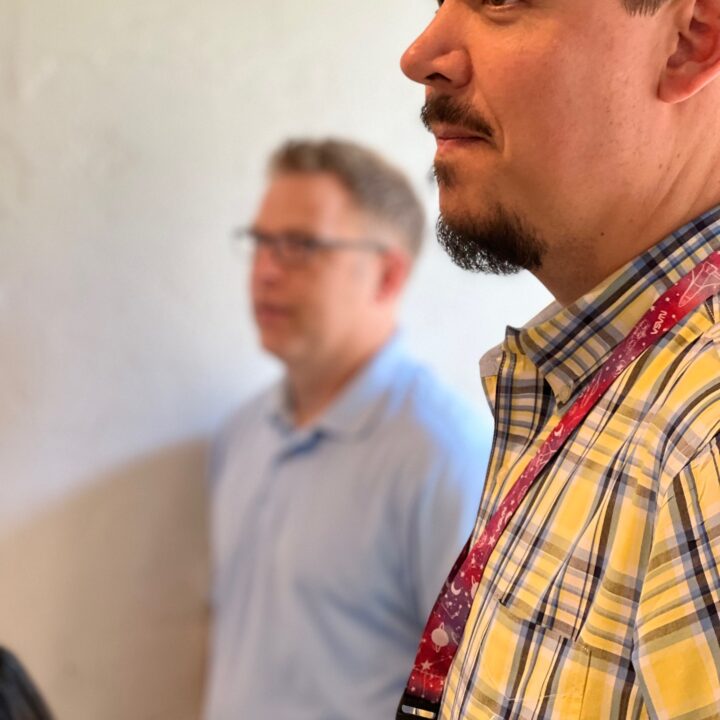At Asemio, we use data and technology solutions to unlock the potential within mission-based organizations – but it takes more than powerful software to accomplish that. For folks on the ground, data and technology can feel distant and cumbersome, so even the best systems can end up seeming like more of a hindrance than a help. We want to change that. One key to successfully incorporating these tools into your organization is building a strong culture around data literacy, where staff feel empowered with the knowledge and confidence they need to adapt to ever-changing community needs.
Why Data Literacy Matters
Data is the new gold, and nonprofits are no exception to this shift. Operating without a data-informed understanding of the population you serve can waste precious time, money, and energy, and you might miss major opportunities to provide support where it’s needed. Collecting data is not enough to change this; staff members need to be able to see, understand, and act on the data they collect. Here’s why promoting data literacy and fostering a data culture should be a top priority:
Shared understanding builds stronger teams.
It’s important to make effective data and technology an engaging part of your organizational operations and to generate excitement around learning together. Unnecessary and overly complicated technology can hurt staff motivation and make team member’s jobs more difficult. Data systems that integrate seamlessly with the work you already do, however, can improve overall job satisfaction by freeing your employees from mundane tasks and creating new opportunities to collaborate. A culture built on access to the same data can fuel fresh conversations and idea generation, promote shared understanding, and generally improve job satisfaction and productivity. A happier team is a stronger team.
Data can help you change the way you work (for the better).
The impact your organization can have changes drastically when you’re operating with relevant insight. Being well-informed has tangible benefits: you can anticipate the cycle of needs within your community, communicate to supporters and donors the kind of impact you’re having, and have more dynamic conversations with your team about how you’re adapting to your population’s needs. You may already be experiencing this if you’ve started collecting and analyzing any of your data. Team members empowered by effective data can make suggestions for greater efficiencies, recommend new projects when gaps are identified, and base their decisions on the real experiences of the community.
Data use across the organization helps you maximize the value of the tools you’ve already invested in.
If putting effective data in the hands of a few individuals on your team is helpful, imagine what could happen if everyone benefited from the data available to them. A lot of people will be collecting data in the course of their day-to-day work, but it’s likely not all are referring back to it. Consider creative ways for folks to improve their daily work. What context does the data offer that may not be obvious? Are there trends that leaders can share with the whole team that might change the way client interactions happen? Funds are precious for nonprofits and it’s important not to let a financial investment go unused, or worse, have further negative impacts on your staff’s ability to work. When you invest in your team’s data literacy and make people feel empowered by data, you’re committing to integrating your technology into the way you onboard new staff, helping staff get the maximum value out of your tools, and keeping your system working for the long term.
Steps to Encourage Data Literacy
You know that data literacy and a culture that values it in your work is important. Now what? How does an organization build data literacy into its culture? It’s important to pause here and assess where your team’s data literacy actually sits. Set attainable, reasonable goals based on your staff’s current comfort and language around effective data use. (Don’t know where to start? Use this guide.) Once you set that foundation, here are a few things to consider as you weave data into the fabric of your operations:
1. Leadership Buy-In
Without leadership support, it’s an uphill battle. Get your leaders on board, championing data literacy as a strategic imperative whenever they communicate with staff and the public. Set goals that leadership can agree to, speak about, and promote within the organization. Link your investment in data to your values and mission as an organization.
2. Accessible Training Programs
Make learning convenient. Implement bite-sized, user-friendly training sessions. Think: Data Literacy 101. Reward people for their participation in learning and reference your learning modules in your day-to-day operations.
3. Show, Don’t Just Tell
Paint a vivid picture of success stories where data-driven decisions led to positive outcomes. Use real examples to inspire staff in recurring meetings. Call out real examples of success with data within your organization and from others in your ecosystem or line of work.
4. Create a Data-Friendly Environment
Make data accessible. Invest in user-friendly tools, dashboards, and reports. Break down data silos for seamless collaboration and conversation between staff members. If you’re not sure whether your current tools are supporting a data-friendly environment, use our Data & Technology Advancement Model to assess where your data maturity lies, or consider whether it’s time to bring a trusted expert to the table.
5. Gamify Learning
Turn your developing data culture into a game. Create challenges, quizzes, and friendly competitions to make learning and participating in your data processes enjoyable. Reward team members for completing their data processing responsibilities and keep your game and prize system fresh by changing it to align with that month, quarter, or year’s goal.
6. Mentorship Programs
If you have technologists on your team, pair data novices with experienced mentors. Learning from peers can be both effective and empowering. If you have no technologists within the organization, connect your team members with your technology partner(s) and foster a relationship where they can learn, ask questions, and have a say in the way your technology evolves.
7. Celebrate Milestones
Acknowledge and celebrate achievements the team reaches in their data literacy. Recognition fuels motivation!
Conclusion
Building a data culture is a journey, not a destination. At Asemio, we understand the transformative power of data for mission-based organizations. By encouraging data literacy in nonprofit organizations, we contribute to a world where meaningful actions stem from informed insights.
Remember, data isn’t just facts and figures – it’s the insight into the needs of the people you serve, and it’s an opportunity to grow and evolve in the ways that will be most meaningful to your organization. Help your team understand this and work together to create a culture where effective data is the gold standard.









